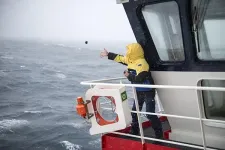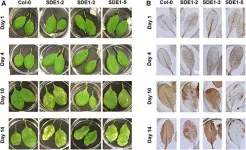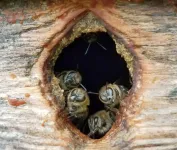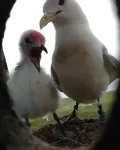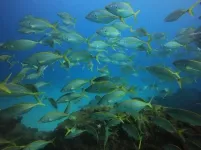Natural hazard events and national risk reduction measures unconnected
2021-01-21
(Press-News.org) Countries where massive natural hazard events occur frequently are not more likely than others to make changes to reduce risks from future disasters. This is shown in an interdisciplinary Uppsala University study now published in Nature Communications.
Natural hazard events, such as storms, floods, and wildfires, entail huge and growing costs all over the world, but they can also be occasions for countries to implement risk-reducing changes. There is no research consensus on whether natural hazard events lead to policy modifications or, instead, contribute to stability and preservation of existing solutions. Knowledge in this area to date has been based on individual case studies, and global trends have not been studied.
To explore the issue on a larger scale, the researchers at the Centre of Natural Hazards and Disaster Science (CNDS) in Uppsala used copious data material, including the international Emergency Events Database (EM-DAT) and progress indicators from the United Nations Office for Disaster Risk Reduction (UNDRR). This material enabled them to study 10,976 natural hazard events between 1970 and 2011 andthe disaster risk reduction (DRR) measures in 85 countries over eight years Examples of actions examined were legislative changes, emergency preparedness and plans, early-warning systems, and training and information campaigns. The researchers also looked at whether disaster risks had been taken into account in terms of land use, natural resource management, climate change adaptation and other areas.
The study investigated relationships between action taken and the number of disasters a country was stricken by and/or their scope in terms of the number of people affected, deaths, and financial costs. To allow international comparisons, the researchers took into account, for each country whether the number and extent of the hazard events were above or below the national historical average.
The results indicate that no link between countries' exposure to natural disasters and their propensity to take DRR measures appears to exist - regardless of national development levels, how advanced the measures were or what types of natural hazard events occurred.
Although the results suggest that natural hazard events did not generally affect DRR measures in the countries studied, national variation was found. For example, the study shows that countries exposed to equally numerous or extensive disasters reacted differently, with some taking no action at all while others made extensive changes.
Japan and Chile, for example, were both affected by severe earthquakes during the study period. Despite their similar experience, Chile reported far-reaching changes in its risk assessments and system of mobilising financial support to boost its disaster preparedness, while Japan reported no changes.
"However, it's important to note here that our study focuses exclusively on disaster risk reduction measures. So it can't be ruled out that disasters triggered changes in other areas. A good example is Japan: the nuclear accident at Fukushima, caused by the 2011 earthquake and tsunami, led to changes in the country's energy policy to reduce dependence on nuclear power," says Daniel Nohrstedt, Professor of Political Science at Uppsala University and the study's first author.
The question of what makes countries' actions diverge remains unanswered. The analysis identifies several countries as particularly interesting for closer investigation to enhance understanding of why some hazard events, but not others, lead to far-reaching changes.
In Nohrstedt's view, the study results challenge the perception of disasters as a key driver of change. Both in public debate and in the research, many people expect destructive disasters to be a wake-up call for decision makers to take action, which is particularly important since several types of these extreme hazard events are expected to increase with climate change. Nevertheless, previous research has shown that disasters often have an aftermath in which issues of accountability, liability and guilt impede learning and change. In other cases - usually in less developed countries - recurring hazard events may require heavy resource inputs to manage acute crises, while issues involving long-term DRR changes receive less attention.
"One factor explaining why certain disasters lead to change while others don't is what happens in the crises that arise after the acute stage, when decision makers and preparedness are called into question. Here, it's important to understand the political aftermath of severe hazard events and how it can affect prospects for learning and change. Our study also shows that countries' tendencies to implement change don't depend on the level of development or type of disaster that hits them," Nohrstedt says.
INFORMATION:
[Attachments] See images for this press release:

ELSE PRESS RELEASES FROM THIS DATE:
2021-01-21
JUPITER, FL - In a landmark neurobiology study, scientists from Scripps Research have discovered a memory gating system that employs the neurotransmitter dopamine to direct transient forgetting, a temporary lapse of memory which spontaneously returns.
The study adds a new pin to scientists' evolving map of how learning, memory and active forgetting work, says Scripps Research Neuroscience Professor Ron Davis, PhD.
"This is the first time a mechanism has been discovered for transient memory lapse," Davis says. "There's every reason to believe, because of conservation ...
2021-01-21
An extra 290,000 pounds a year for lighting and cleaning because smog darkens and pollutes everything: with this cost estimate for the industrial city of Manchester, the English economist Arthur Cecil Pigou once founded the theory of environmental taxation. In the classic "The Economics of Welfare", the first edition of which was published as early as 1920, he proved that by allowing such "externalities" to flow into product prices, the state can maximise welfare. In 2020, exactly 100 years later, the political implementation of Pigou's insight has gained strength, important objections are being invalidated, and carbon pricing appears more efficient than regulations and bans according to a ...
2021-01-21
Scientists from the CNRS, CNES, IRD, Sorbonne Université, l'Université Toulouse III - Paul Sabatier and their Australian colleagues*, with the support of the IPEV, have provided a comprehensive analysis on the evolution of Southern Ocean temperatures over the last 25 years. The research team has concluded that the slight cooling observed at the surface hides a rapid and marked warming of the waters, to a depth of up to 800 metres. The study points to major changes around the polar ice cap where temperatures are increasing by 0.04°C per decade, which could have serious consequences for Antarctic ice. Warm water is also rising rapidly to the surface, at a rate of 39 metres per decade, i.e. between three and ten ...
2021-01-21
Citrus greening disease, also known as Huanglongbing (HLB), is devastating to the citrus industry, causing unprecedented amounts of damage worldwide. There is no known cure. Since the disease's introduction to the United States in the early 2000s, research efforts have increased exponentially. However, there is still a lack of information about the molecular mechanism behind the disease.
"Getting into the molecular details behind what contributes to citrus greening symptom development and disease progression is key to finding sustainable solutions to combat the pathogen," explained plant pathologist Wenbo Ma. "We bring the community one step closer to understanding these mechanisms ...
2021-01-21
Understanding the genetic and environmental factors that enable some feral honey bee colonies to tolerate pathogens and survive the winter in the absence of beekeeping management may help lead to breeding stocks that would enhance survival of managed colonies, according to a study led by researchers in Penn State's College of Agricultural Sciences.
Feralization occurs when previously domesticated organisms escape to the wild and establish populations in the absence of human influence, explained lead researcher Chauncy Hinshaw, doctoral candidate in plant pathology and environmental microbiology.
"In the case of honey bees, colonies that escape domestication and establish in the wild provide an opportunity to study how environmental and genetic factors ...
2021-01-21
Muscle structure and body size predict the athletic performance of Olympic athletes, such as sprinters. The same, it appears, is true of wild seabirds that can commute hundreds of kilometres a day to find food, according to a recent paper by scientists from McGill and Colgate universities published in the Journal of Experimental Biology.
The researchers studied a colony of small gulls, known as black-legged kittiwakes, that breed and nest in an abandoned radar tower on Middleton Island, Alaska. They attached GPS-accelerometers--Fitbit for birds -- ...
2021-01-21
Warming ocean waters could reduce the ability of fish, especially large ones, to extract the oxygen they need from their environment. Animals require oxygen to generate energy for movement, growth and reproduction. In a recent paper in the Proceedings of the National Academy of Science, an international team of researchers from McGill, Montana and Radboud universities describe their newly developed model to determine how water temperature, oxygen availability, body size and activity affect metabolic demand for oxygen in fish.
The model is based on physicochemical principles that look at oxygen consumption and diffusion at the gill surface in relation to water temperature and body size. Predictions were compared against actual measurements from over 200 fish species where oxygen ...
2021-01-21
A McGill-led research team has identified a new species of praying mantis thanks to imprints of its fossilized wings. It lived in Labrador, in the Canadian Subarctic around 100 million years ago, during the time of the dinosaurs, in the Late Cretaceous period. The researchers believe that the fossils of the new genus and species, Labradormantis guilbaulti, helps to establish evolutionary relationships between previously known species and advances the scientific understanding of the evolution of the most 'primitive' modern praying mantises. The unusual find, described in a recently published study in Systematic ...
2021-01-21
A recent McGill study published in Environmental Science and Technology finds that annual methane emissions from abandoned oil and gas (AOG) wells in Canada and the US have been greatly underestimated - by as much as 150% in Canada, and by 20% in the US. Indeed, the research suggests that methane gas emissions from AOG wells are currently the 10th and 11th largest sources of anthropogenic methane emission in the US and Canada, respectively. Since methane gas is a more important contributor to global warming than carbon dioxide, especially over the short term, the researchers believe that it is essential to gain a clearer understanding of methane ...
2021-01-21
WINSTON-SALEM, N.C. - Jan. 20, 2021 - Breast cancer is the second most common cancer among women in the United States, and cigarette smoking is associated with a higher incidence of breast cancer spread, or metastasis, lowering the survival rate by 33% at diagnosis.
While cigarette smoking's link to cancer is well-known, the role of nicotine, a non-carcinogenic chemical found in tobacco, in breast-to-lung metastasis is an area where more research is needed.
Now, scientists at Wake Forest School of Medicine have found that nicotine promotes the spread of breast cancer cells into the lungs.
The study ...
LAST 30 PRESS RELEASES:
[Press-News.org] Natural hazard events and national risk reduction measures unconnected


